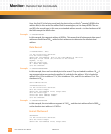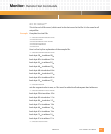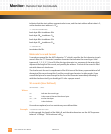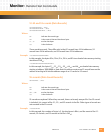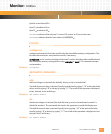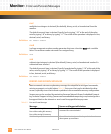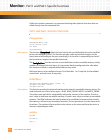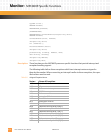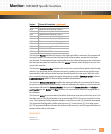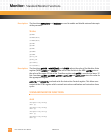
Monitor: PmT1 and PmE1-Specific Functions
PmT1 and PmE1 User’s Manual 10002367-02
8-30
Unlike the monitor commands, no argument checking takes place for functions that are
called directly from the command line.
PMT1 AND PME1-SPECIFIC FUNCTIONS
ChangeBaud
ChangeBaud(Baud, Port)
struct SCCPort *Port;
int Baud;
ConfigSerDevs()
Description: The function ChangeBaud allows the baud rate for the port defined by Port to be modified
to the value defined by Baud. This function accepts a selected number of values for the
baud rate and will configure the port accordingly. It is the caller’s responsibility to check if
the terminal can support the specified baud rate.
The ConfigSerDevs function uses the current definitions in the nonvolatile memory config-
uration to configure the serial ports. It is important that the configuration be valid when
this function is called, or unpredictable behavior may result.
Both serial ports can be configured to use 5 to 8 data bits, 1 or 2 stop bits, the handshake
control lines, and odd, even, or no parity.
EEPROMAcc
unsigned char EEPROMAcc(mode, offset, ch)
unsigned long mode, offset;
unsigned char ch;
Description: This function provides the physical interface to the board’s nonvolatile memory device. The
mode indicates one of four access types: READ, READ_PROBE, WRITE, and WRITE_PROBE.
The probe mode was left for compatibility with earlier versions of the monitor. If mode is
zero, a byte is read from nonvolatile memory. If mode is one, a byte is written to nonvolatile
memory. The Offset indicates the byte location to be modified and assumes that nonvola-
tile memory is a linear array of memory locations. The last parameter ch is the character to
be written. The number of bytes written to the device or the value read from the device is
returned, depending on mode.
getchar
getchar
putchar(c)
char c;



